Abstract
3-Chlorobenzoate-grown cells of Pseudomonas sp. B13 readily cometabolized monofluorobenzoates. A catabolic pathway for the isomeric fluorobenzoates is proposed on the basis of key metabolites isolated. Only 4-fluorobenzoate was utilized and totally degraded after a short period of adaptation. The isoenzymes for total degradation of chlorocatechols, being found during growth with 3-chlorobenzoate or 4-chlorophenol, were not induced in the presence of fluorobenzoates. Correspondingly, only the ordinary enzymes of the benzoate pathway were detected in 4-fluorobenzoate-grown cells. Ring cleavage of 3-fluorocatechol was recognized as a critical step in 3-fluorobenzoate degradation. 2-Fluoro-cis,cis-muconic acid was identified as a dead-end metabolite from 2- and 3-fluorobenzoate catabolism. During 2-fluorobenzoate cometabolism, fluoride is eliminated by the initial dioxygenation.
Full text
PDF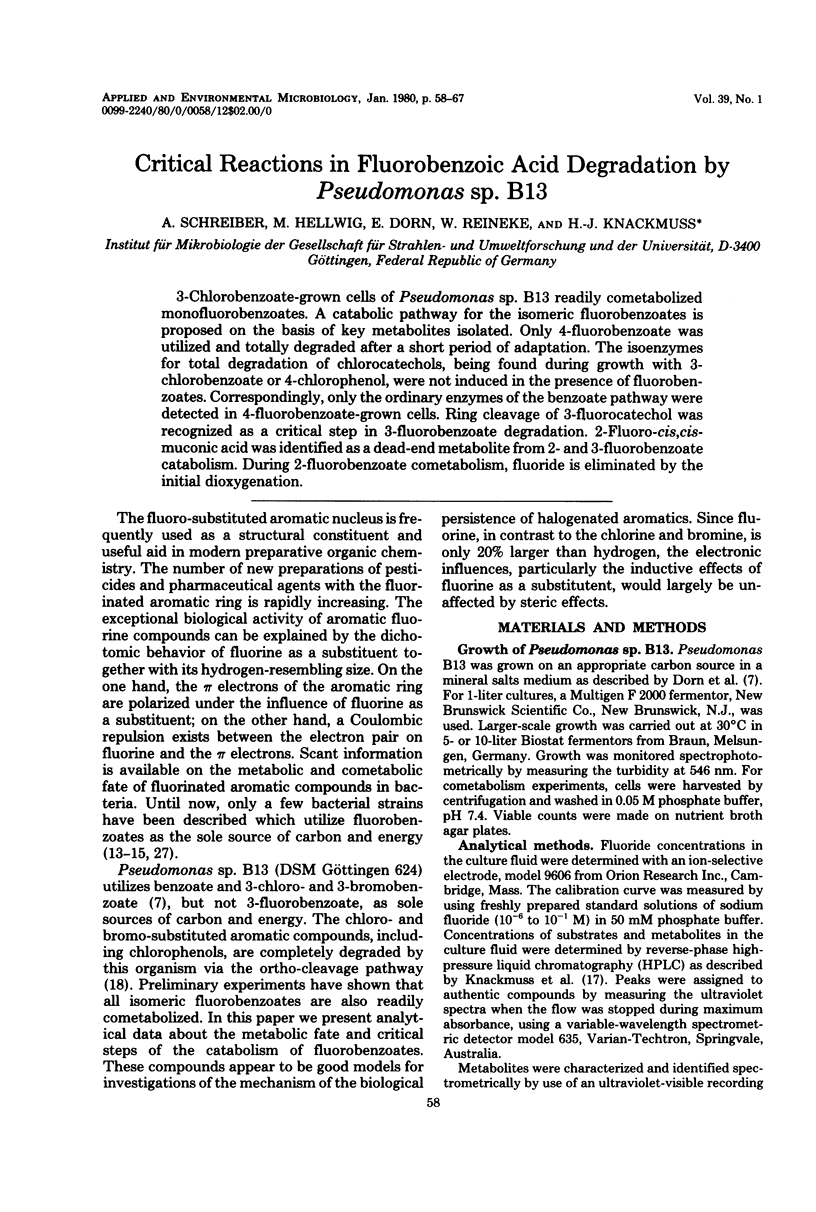
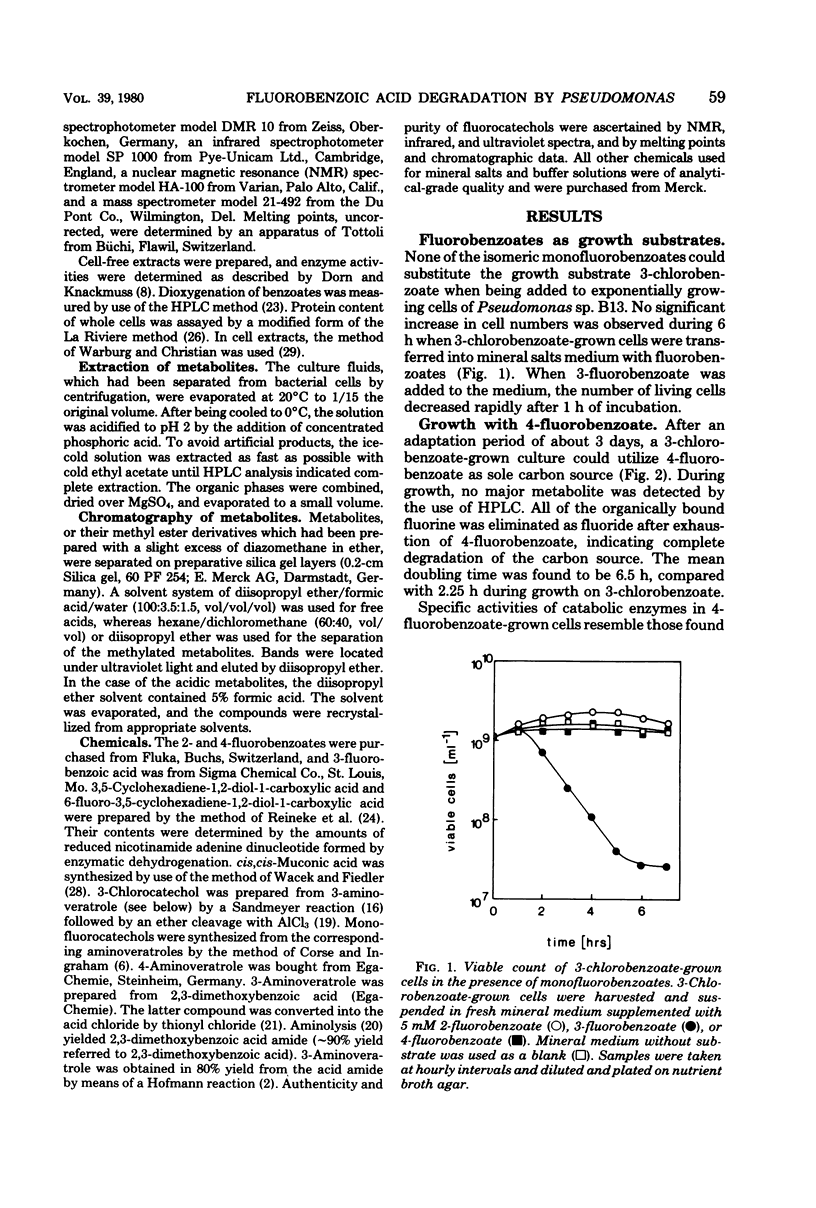
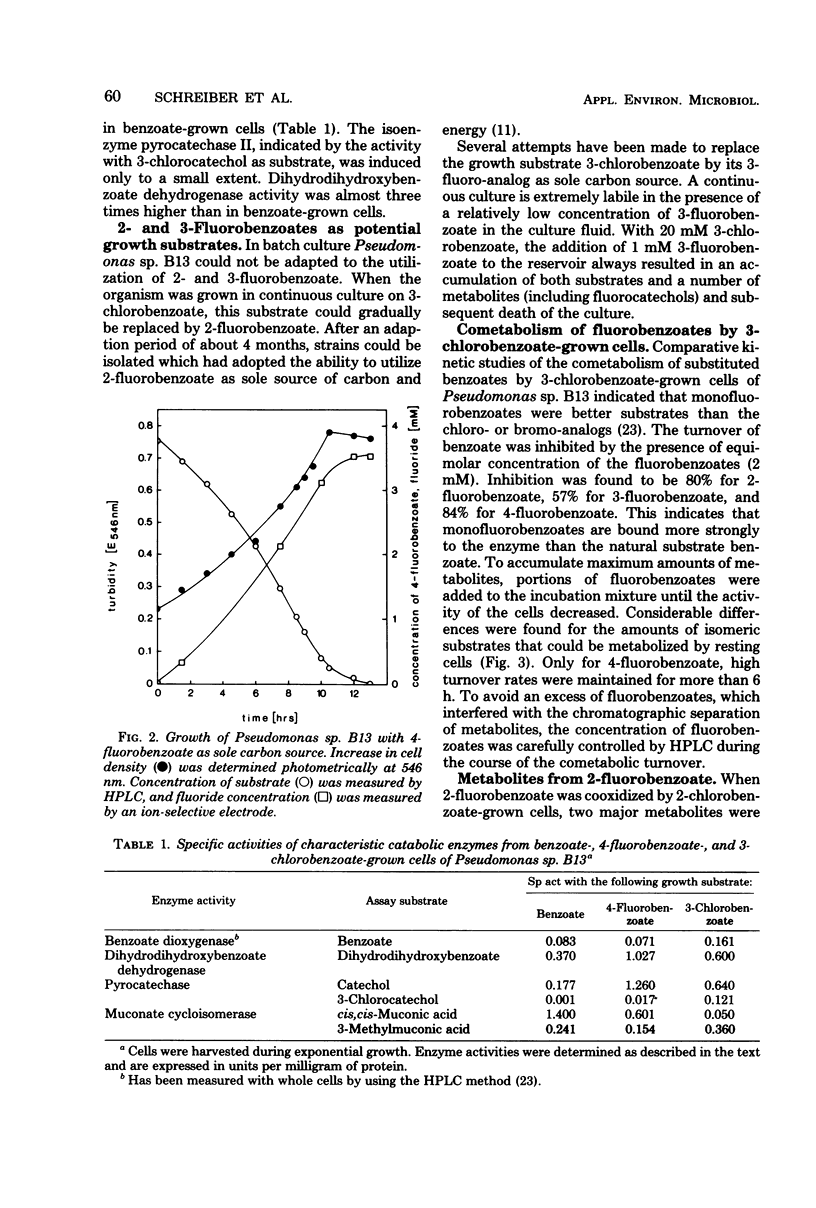
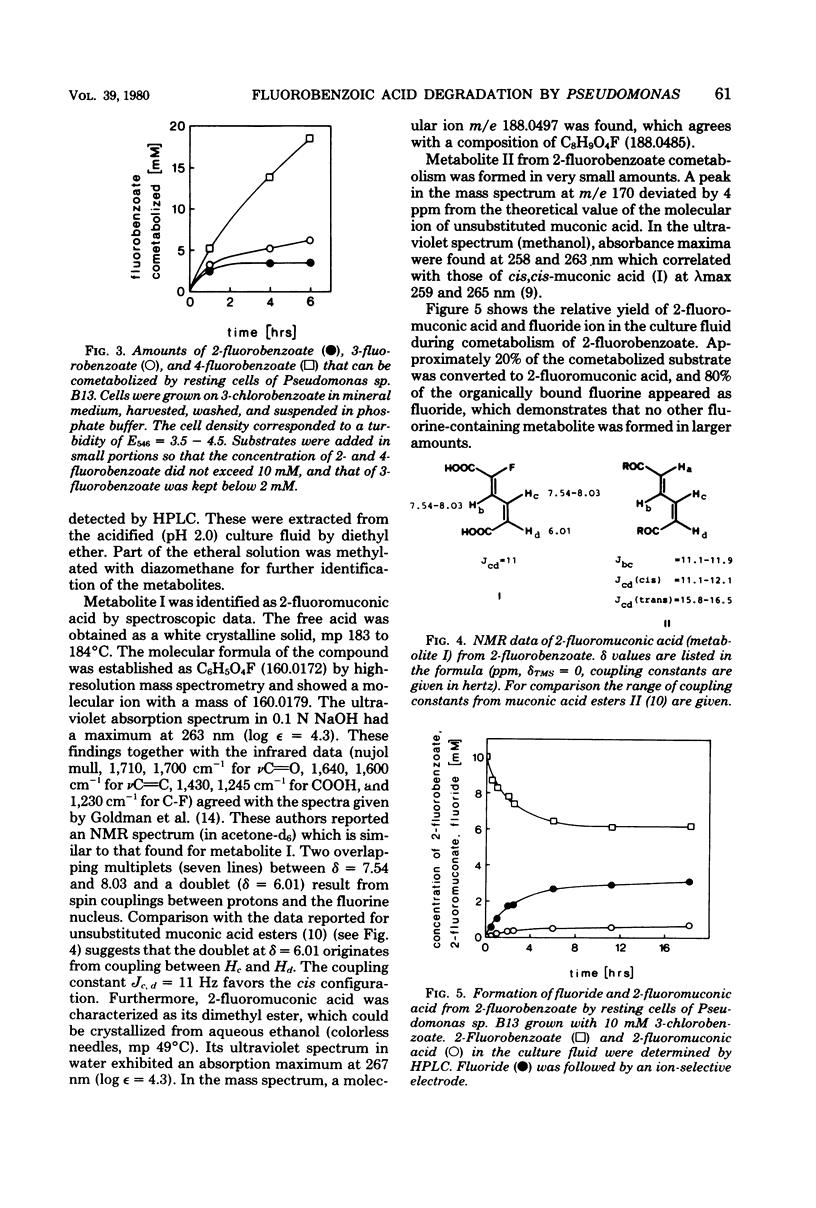
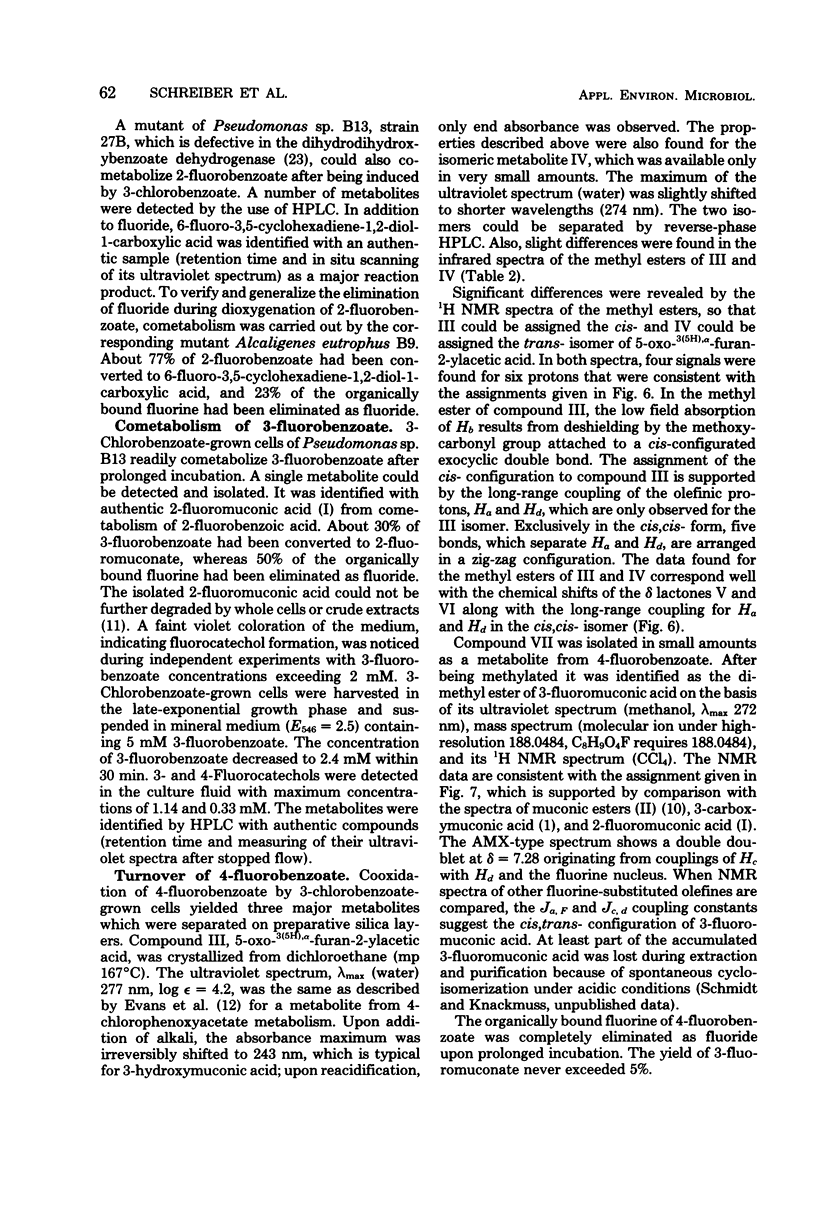
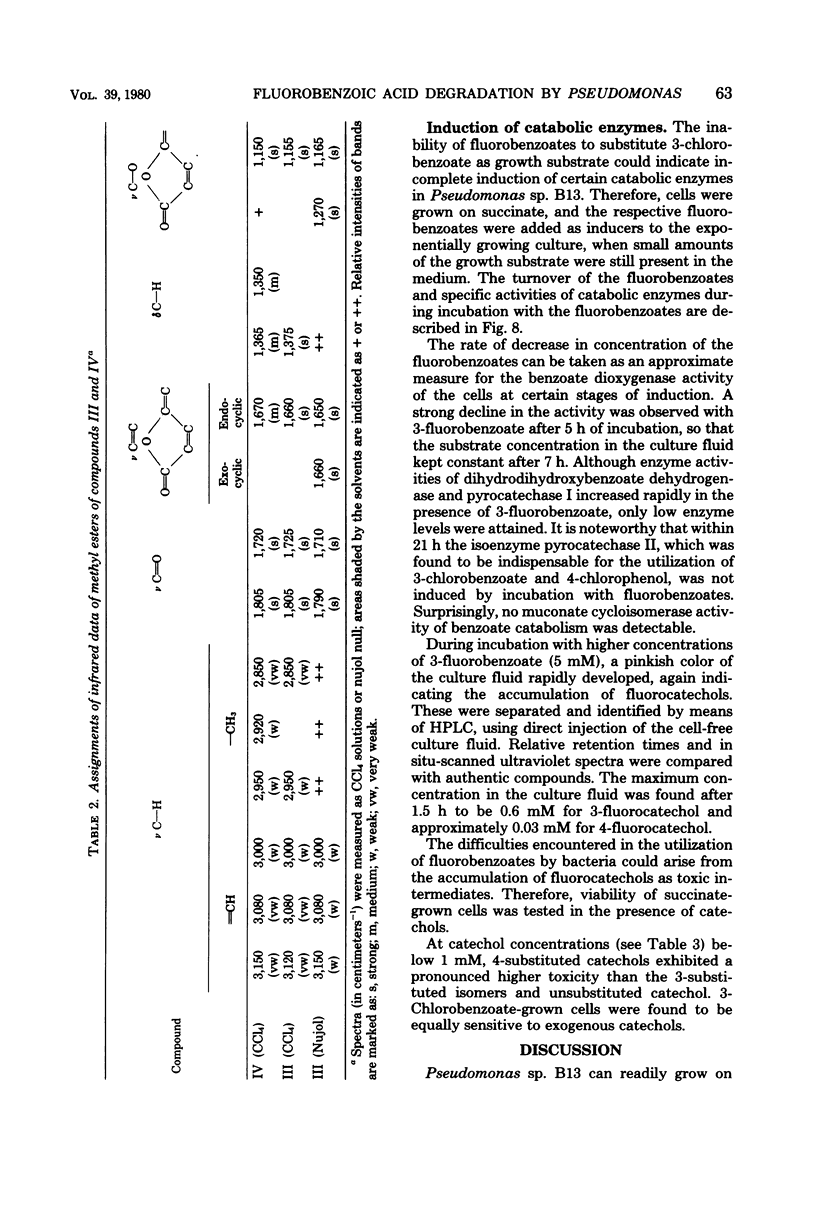
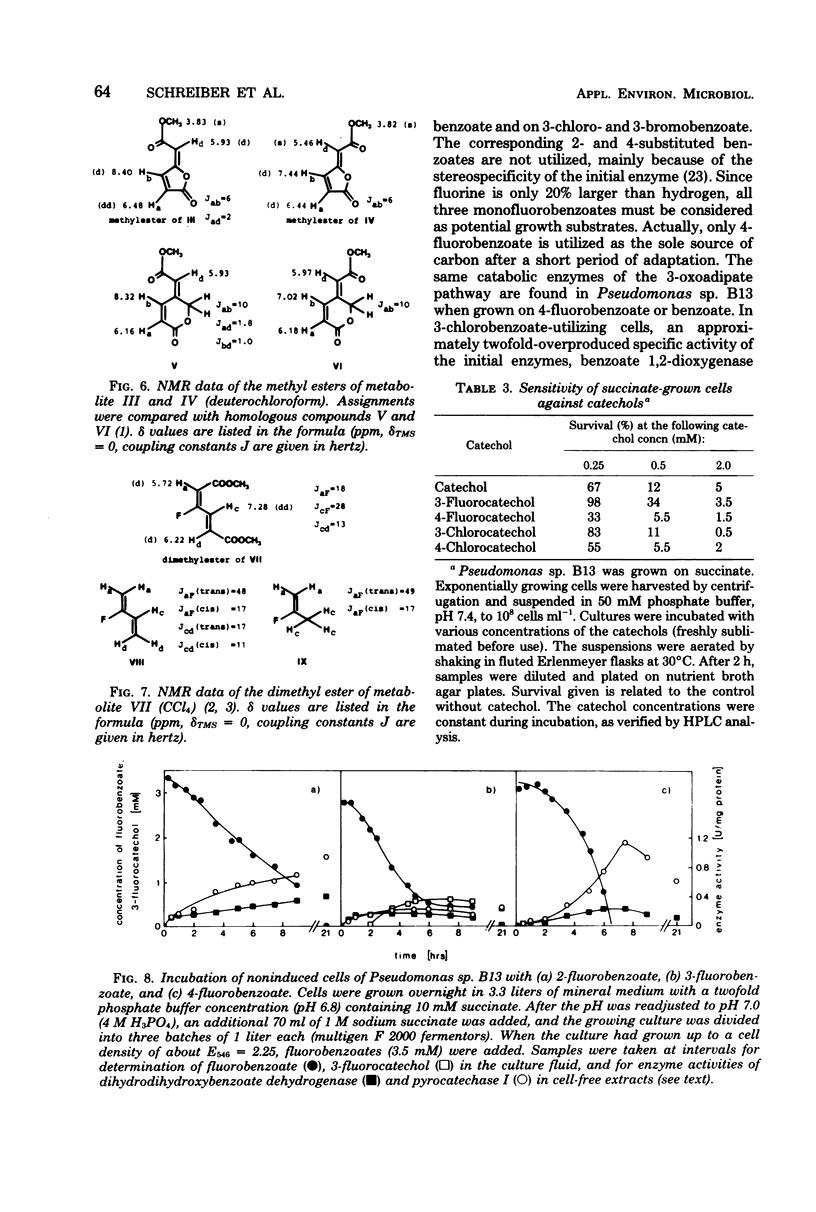
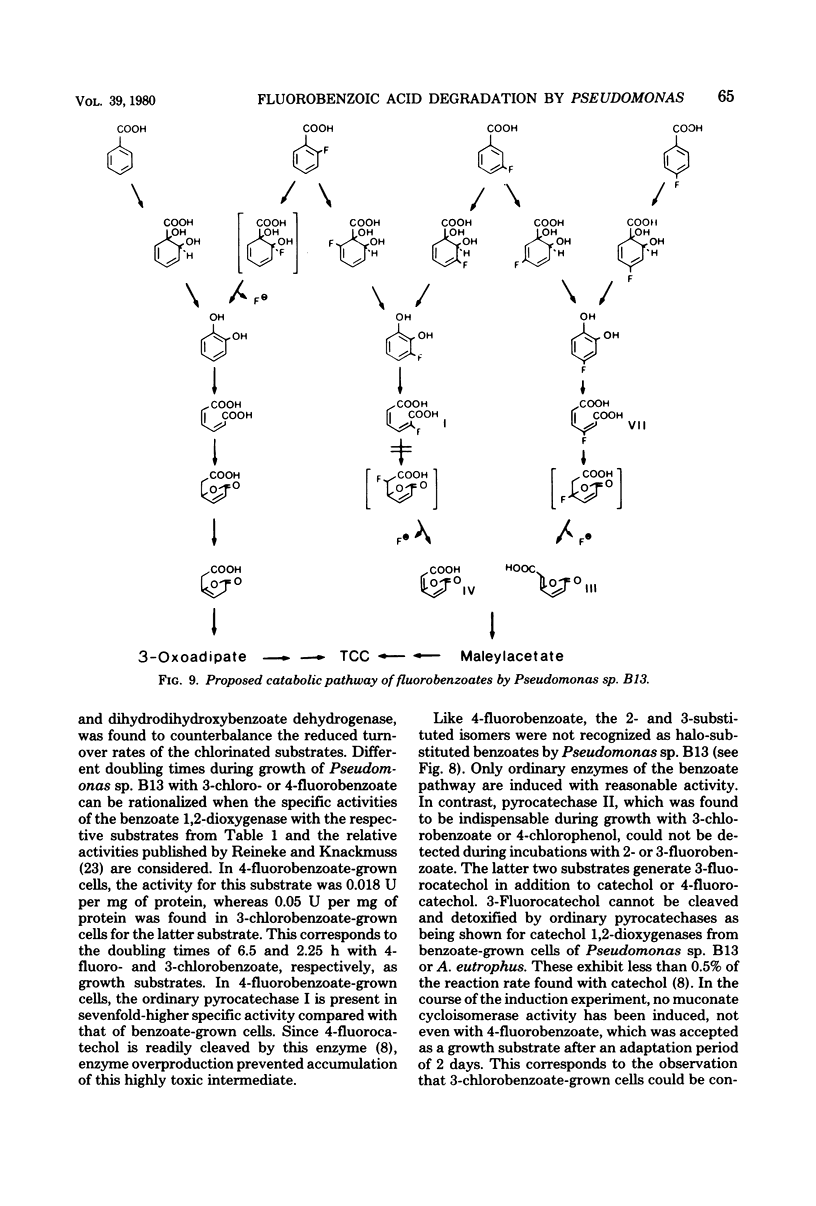
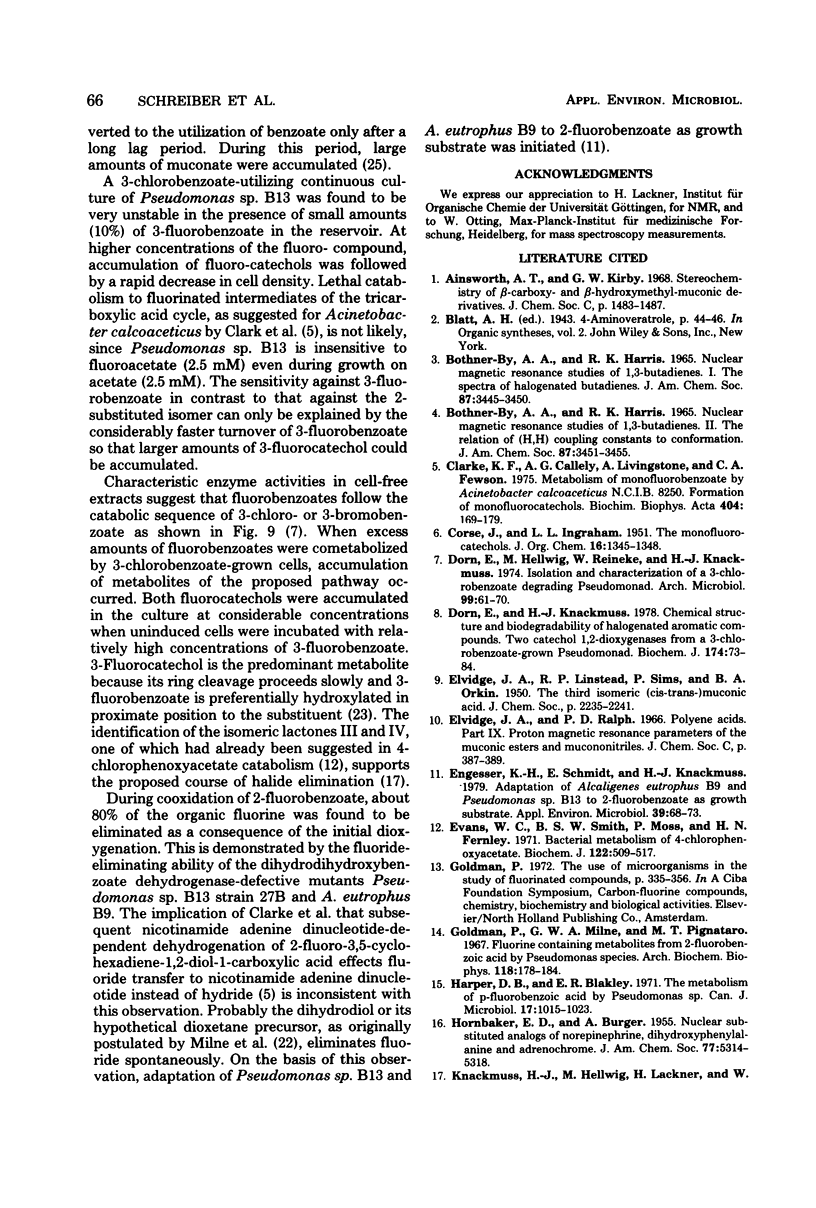
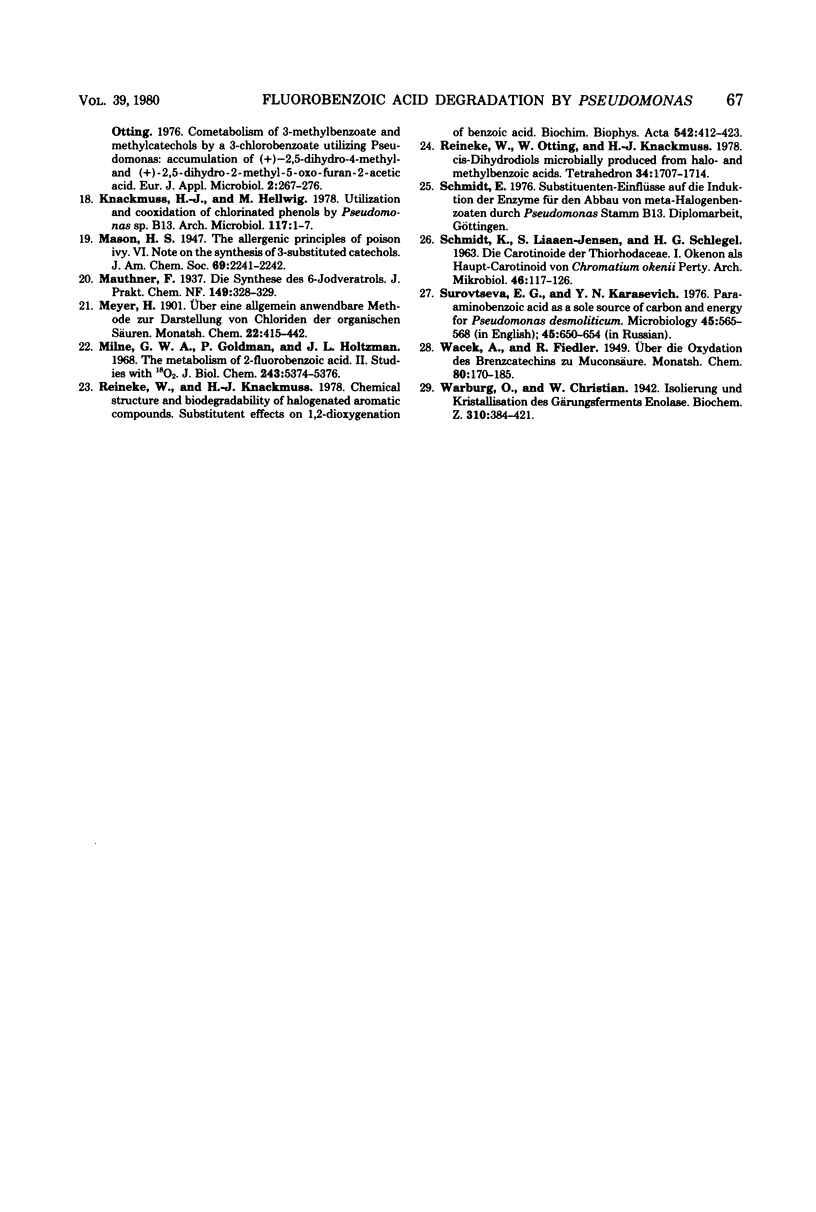
Selected References
These references are in PubMed. This may not be the complete list of references from this article.
- Clarke K. F., Callely A. G., Livingstone A., Fewson C. A. Metabolism of monofluorobenzoates by Acinetobacter calcoaceticus N.C.I.B. 8250. Formation of monofluorocatechols. Biochim Biophys Acta. 1975 Oct 9;404(2):169–179. doi: 10.1016/0304-4165(75)90323-2. [DOI] [PubMed] [Google Scholar]
- Dorn E., Hellwig M., Reineke W., Knackmuss H. J. Isolation and characterization of a 3-chlorobenzoate degrading pseudomonad. Arch Microbiol. 1974;99(1):61–70. doi: 10.1007/BF00696222. [DOI] [PubMed] [Google Scholar]
- Dorn E., Knackmuss H. J. Chemical structure and biodegradability of halogenated aromatic compounds. Two catechol 1,2-dioxygenases from a 3-chlorobenzoate-grown pseudomonad. Biochem J. 1978 Jul 15;174(1):73–84. doi: 10.1042/bj1740073. [DOI] [PMC free article] [PubMed] [Google Scholar]
- Engesser K. H., Schmidt E., Knackmuss H. J. Adaptation of Alcaligenes eutrophus B9 and Pseudomonas sp. B13 to 2-Fluorobenzoate as Growth Substrate. Appl Environ Microbiol. 1980 Jan;39(1):68–73. doi: 10.1128/aem.39.1.68-73.1980. [DOI] [PMC free article] [PubMed] [Google Scholar]
- Evans W. C., Smith B. S., Moss P., Fernley H. N. Bacterial metabolism of 4-chlorophenoxyacetate. Biochem J. 1971 May;122(4):509–517. doi: 10.1042/bj1220509. [DOI] [PMC free article] [PubMed] [Google Scholar]
- Harper D. B., Blakley E. R. The metabolism of p-fluorobenzoic acid by a Pseudomonas sp. Can J Microbiol. 1971 Aug;17(8):1015–1023. doi: 10.1139/m71-162. [DOI] [PubMed] [Google Scholar]
- Knackmuss H. J., Hellwig M. Utilization and cooxidation of chlorinated phenols by Pseudomonas sp. B 13. Arch Microbiol. 1978 Apr 27;117(1):1–7. doi: 10.1007/BF00689343. [DOI] [PubMed] [Google Scholar]
- Milne G. W., Goldman P., Holtzman J. L. The metabolism of 2-fluorobenzoic acid. II. Studies with 18-O2. J Biol Chem. 1968 Oct 25;243(20):5374–5376. [PubMed] [Google Scholar]
- Reineke W., Knackmuss H. J. Chemical structure and biodegradability of halogenate aromatic compounds. Substituent effects on 1,2-dioxygenation of benzoic acid. Biochim Biophys Acta. 1978 Sep 6;542(3):412–423. doi: 10.1016/0304-4165(78)90372-0. [DOI] [PubMed] [Google Scholar]
- SCHMIDT K., LIAAENJENSEN S., SCHLEGEL H. G. DIE CAROTINOIDE DER THIORHODACEAE. I. OKENON ALS HAUPTEAROTINOID VON CHROMATIUM OKENII PERTY. Arch Mikrobiol. 1963 Aug 1;46:117–126. [PubMed] [Google Scholar]


